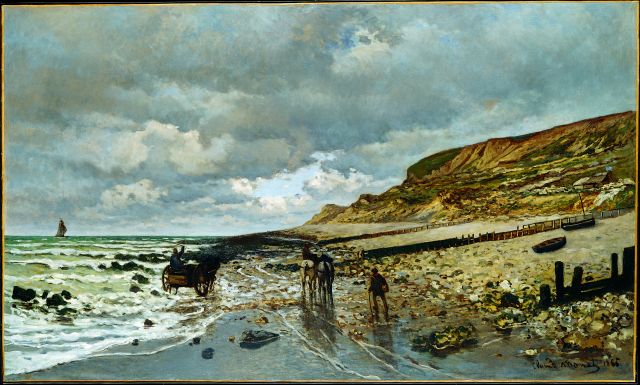Claude Monet is now perhaps the world's most famous Impressionist, but at the age of 24 he positioned himself firmly in the realist tradition with this painting, his first work accepted at the Salon. The Salon was the only official venue for artists to exhibit their work in France at this time and the acceptance of two works in 1865 (this and a pendant piece) signaled to the art world that Monet had arrived. The subject is decidedly unglamorous, but the composition and palette make the scene extremely visually interesting. Monet has positioned the viewer directly on the wet sand, vulnerable to the tide at a strategic point where dramatic diagonals draw him in. Monet's palette is based on careful observation of nature, yet the canvas is divided into four wedges of color. The painting is monumental, 35 1/2 x 59 1/4". It was painted in the studio based on smaller pieces done outdoors. Monet's teacher and mentor, Eugene Boudin was also a realist, but, when compared with a work by Gustave Courbet, the leading French realist, Monet's daring and desire to move beyond realism is more evident.
The Stormy Sea (or the Wave)
1869

